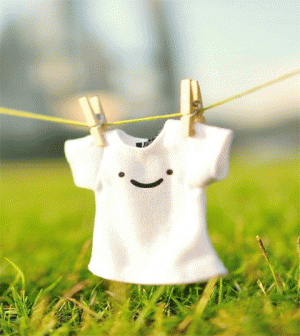- Finding Unshakable Power in a World That Wants to Pull Us ApartPosted 2 weeks ago
- What could a Donald Trump presidency mean for abortion rights?Posted 2 weeks ago
- Financial Empowerment: The Game-Changer for Women in Relationships and BeyondPosted 2 months ago
- Mental Health and Wellbeing Tips During and After PregnancyPosted 2 months ago
- Fall Renewal: Step outside your Comfort Zone & Experience Vibrant ChangePosted 2 months ago
- Women Entrepreneurs Need Support SystemsPosted 2 months ago
5 Tips to Make Doing Laundry Greener

By The Green Divas | Naturallysavvy.com
Detergents and fabric softeners can be a major source of indoor air pollution. They can also cause skin irritations, and even be poisonous if ingested or used incorrectly. Plus, the environmental impact can be significant, polluting waterways and killing fish.
Let me lead you down the friendly, non-toxic, eco-friendly path for doing laundry.
1. Decode your detergent.
“HE,” “Ultra-Concentrated,” “Super Stain Fighting Power,” “All Natural,” “Free & Clear”—what does it all mean?
Well, nothing really. Just like most labels, these words are typically marketing gimmicks. To figure out what detergent you need, find one with earth friendly ingredients (see next tip), read the instructions for whether it can be used in an HE (High Efficiency) machine if you have one, and find a scent that you like (see tip number five for making sure your scent is safe)!
Read more about decoding cosmetics labels
2. ID the ingredients.
Look for ingredients you can identify—and avoid these (source: motherearthliving.com):
•benzaldehyde
•ethylenediaminetetraacetic acid
•fragrance
•diethanolamine
•quaternium-15
•2-butoxyethanol
•chlorine
•perchlorethylene (perc)
•ethyl acetate
•nonylphenol ethoxylate
•ER/KSN/OB/OB-1 (optical brighteners)
•linear alkyl sodium sulfonates (LAS)
•petroleum distillates (also called naphthas)
•phosphates
Check with the Environmental Working Group to review specific brands and ingredients, and their safety. You can also try making your own.
3. Skip the softener.
Fabric softeners contain a ton of chemicals and fake fragrances that should be avoided. Try plain white vinegar instead, pour right in the compartment that you would put the softener, and use about the same amount that you would for softener. Vinegar is a natural fabric softener, and can be great for removing build up in your washer! Not to mention it is sure to save you money. As for dryer sheets—they’re not needed when you use vinegar in your wash, meaning more money saved, and less waste!
4. Have a ball.
Dryer balls, that is. Using wool dryer balls in the dryer is a great way to speed up dry time, reduce static and reduce wrinkles. You can make your own, or buy some. If you find that you still have an issue with static, try crumpling up a sheet of aluminum foil (from your kitchen) and placing it inside an old sock or some pantyhose, and tossing it in your dryer with the laundry.
5. Free yourself from fragrance.
Despite all those television ads, you don’t need to use chemicals and fake fragrances to make your laundry smell clean. Clean laundry smells clean. It does not smell like flowers, or fruit, or an ocean breeze. However, we have come to associate a scent with our laundry being clean, and if you’re not ready to give that up—try essential oils in your laundry!
The trick is to find a scent that you like, that is strong enough to come through onto your laundry. This can take some trial and error, but in my experience, citrus and woodsy oils seem to be the strongest. You can place a few drops in with the vinegar for your wash cycle, and/or onto the wool dryer balls in your dryer.
Read more about how to go fragrance free
Written by Green Diva Christine (Christine Zadykovich) for The Green Divas.






